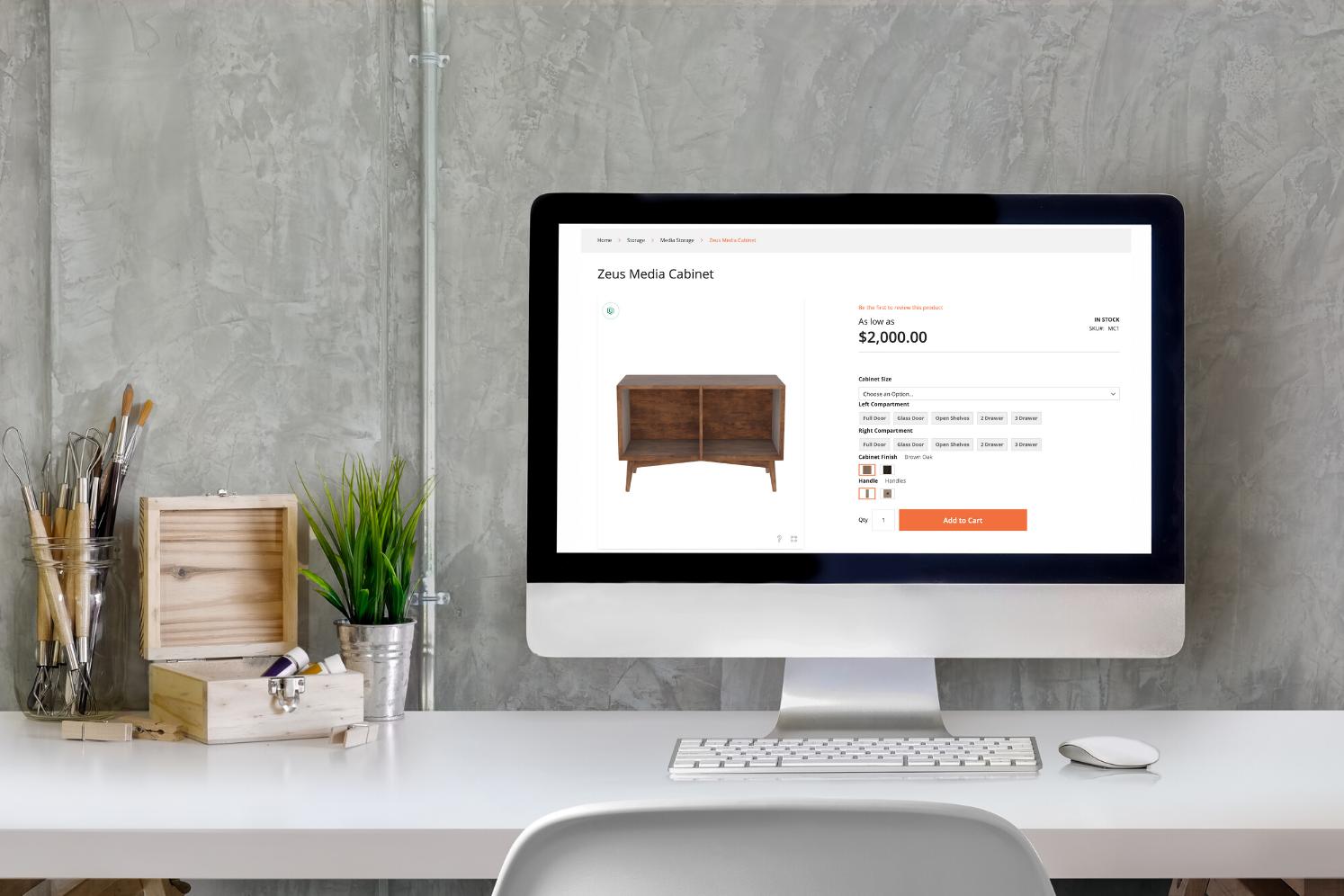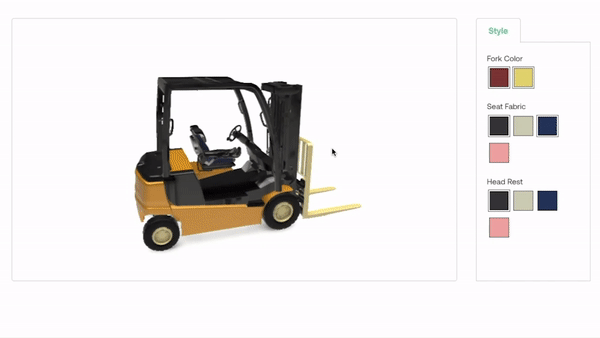What is parametric configuration?
Parametric configuration is one type of configuration available in software that generates 3D visuals.
Parametric configuration makes it possible to configure objects based on defined parameters like height, color, and material, as well as more functionality-based features. In the context of 3D visuals, parametric configuration lets users generate 3D renderings of custom items in real time, without input from designers, developers, or 3D artists.
The result, for anyone trying to sell custom or highly configurable products, is the ability to move much faster and to create more compelling visual assets than is otherwise possible. These assets give clients greater confidence during the sales process, make it easier for clients to make purchase decisions, and increase client satisfaction upon product delivery. As a result, having parametric models of products can lead to higher loyalty rates.
Here, we break down how parametric configuration works and how it can benefit those selling customizable products.
How does parametric configuration work?
In software that creates 3D visuals, parametric configuration typically works a lot like CAD software. The user inputs parameters, and the software generates a 3D model of the product based on the respective parametric design.
For example, if you sell building materials and a client wants custom kitchen cabinets, you could use parametric configuration to input the cabinets’ height and width, wood type, handle type, hinge type, etc., and generate an interactive 3D rendering of the cabinets on the spot.
The client could then see what the cabinets would look like, interact with them in three dimensions, and decide whether they want to make any adjustments before finalizing their order.
Schedule time to learn more about parametric configuration.
How does parametric configuration power sales teams?
What’s key to understand about the above scenario is that anyone can input the parameters—even someone without a background in design, development, or 3D art.
This can be a game changer for sales teams for three reasons:
- Client certainty before ordering. Custom building materials can be tricky. They require clients to pay more for something they can’t actually see until it’s delivered. That can lead to indecision during the sales process, which translates to a longer sales cycle. With parametric configuration, salespeople can show clients in three dimensions and in real time what their custom designs will look like. Clients can then know with
 certainty whether they’ll be happy with the design and therefore make a decision faster. In fact, shoppers who see a product in 3D are 11 times more likely to buy it than those who don’t.
certainty whether they’ll be happy with the design and therefore make a decision faster. In fact, shoppers who see a product in 3D are 11 times more likely to buy it than those who don’t. - Client satisfaction upon delivery. Seeing custom designs before ordering means no surprises when physical products show up. On standard eCommerce platforms, seeing 3D images before hitting “buy” reduces returns by 35 percent. For custom products, expect greater satisfaction and fewer returns and requests for modifications.
- Repeat business. When clients get what they want with little effort, they’re more likely to become repeat customers. In fact, those who experience low-effort transactions are 23.5 times more likely than those who experience high-effort transactions to return to a vendor. Because parametric configuration makes the ordering process effortless for clients, it increases the likelihood that those clients will return, which makes for a stronger pipeline and better revenue.
Read more about virtual B2B selling.
How does parametric configuration power engineering to order?
In engineering-to-order applications, parametric configurators would usually come into play during the sales phase, when the client and vendor are agreeing on the details of the product to be created.
As in other sales scenarios, parametric configuration can automate this process by providing immediate visual renderings of engineered-to-order products to help deliver client certainty more efficiently. This is particularly valuable in an engineering-to-order context, where a vendor may be working without any kind of template.
Unlike artists’ renderings, 3D visuals created using parametric configurations are instantly viewable, meaning clients can make decisions and adjustments faster, and sales conversations can proceed more quickly to the scale out and procurement phase.
Use parametric configuration to personalize your customer experience.
Selling a configurable or customizable product line is one thing. Being able to let clients visualize that customization process in real time during the sales process is another—and that capability makes it possible for your sales team to reach a whole new level of client engagement.
What’s more, because Threekit's 3D product configurator makes it possible to generate custom interactive 3D visuals in real time—without any expertise in design or 3D artistry—parametric configuration is an incredibly valuable tool for the remote sales conversations many teams are relying on today.
To learn more about how parametric configuration might fit into your sales cycle, schedule a demo today.
Threekit's product visualization software creates photorealistic images, interactive 3D and augmented reality experiences that help businesses sell more. To learn more, please schedule some time with one of our teammates.


